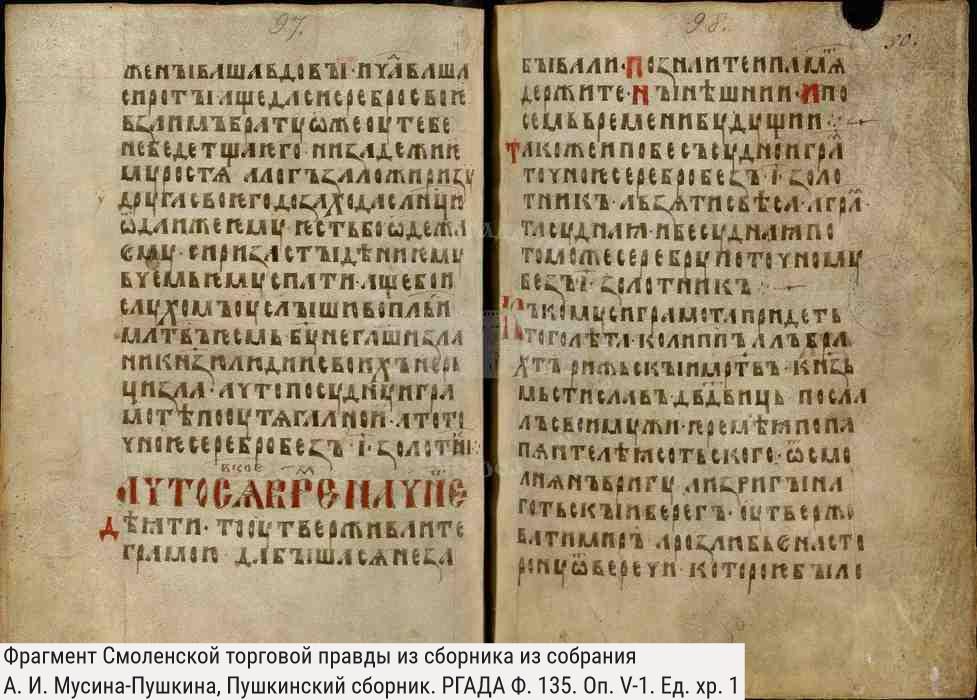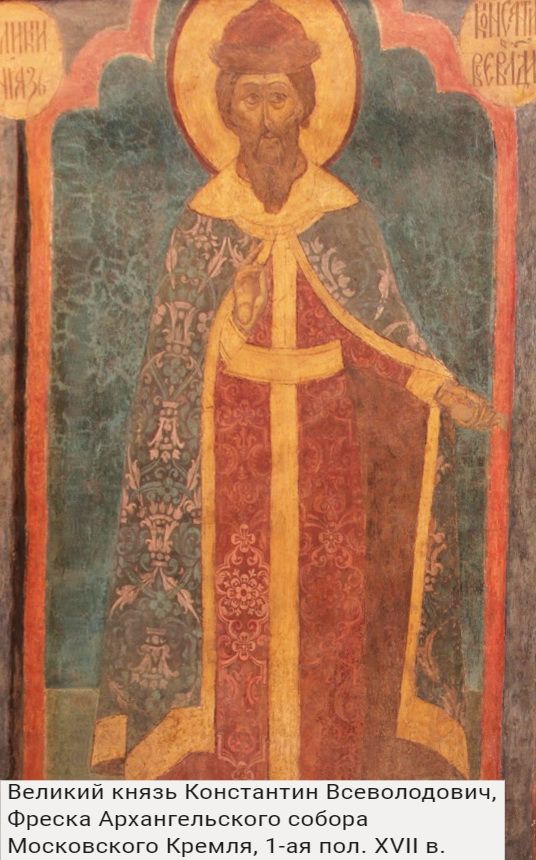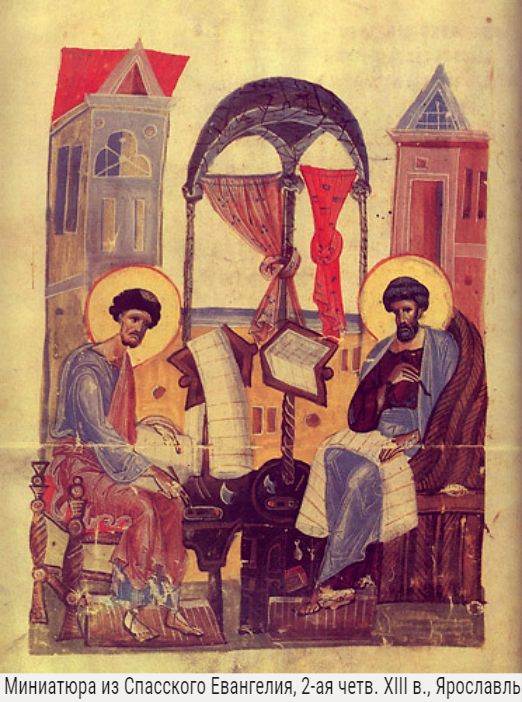One can find the opinion in journalistic literature that the European system of higher education in Europe in the Middle Ages was at a level incomparably higher than in Russia. Thus, the journalist and historian N. Uskov in the concluding part of his historical and journalistic work “Why Russia Lags behind Europe” writes: “The medieval education system, which was formed already in the Carolingian era in the 8th – 9th centuries, went back to the late ancient canon [...] nothing there never was and couldn’t be like this in Russia. It was located outside the pax romana. Russian antiquity is a dense impassable forest, which in the 14th century was stupid to revive. " The article “Why did the first Russian university open more than 500 years later than European universities?” Also concludes that the education system in ancient Russia is completely backward. scientist and publicist Yu. Magarshak.
Similar statements are based on two controversial premises. On the one hand, supporters of the concept of "dense Rus" believe that a European university of the XI-XIII centuries. - This is an institution of higher education, comparable in its public role to modern higher education institutions, on the other hand, they argue that medieval Russia in relation to advanced education was completely backward. Let's try to figure out what were the European educational institutions of this era and what kind of education system existed in those days in Russia.
The origin of European universities
First, the origin of the term “university” needs to be clarified. Encyclopedia Britannica gives the following definition. The Latin word universitas was originally used to mean any community or corporation. To refer to educational organization, this word was used in the phrase "universitas magistrorum et academarium" (lat .: community of teachers and students). Over time, probably by the end of the fourteenth century, this term began to be used on its own with the exclusive meaning of a community of teachers and scientists whose corporate existence was recognized and authorized by civil or church authorities. The usual designation of educational communities in medieval literature is the word "studium" (lat.: School).
Secondly, the origin of the first European universities should be clarified in general terms. The origins of Western European education go back to the monastery church schools founded in the Kingdom of Frank in the era of Charlemagne, which, it is worth noting, has never learned to write in our whole life, as we learn from Charlemagne’s biography "Vita Karoli Magni" (Latin: Life Charlemagne) authorship of Einhard, the head of the court school. However, Carolingian schools did not receive widespread development, with the exception of some of them, including the school at the Notre-Dame Cathedral in Paris and the school at the Monastery of St. Genevieve of Paris, laid in the first quarter of the XII century. the beginning of the school (studium), which at the beginning of the XIII century. received state recognition in the person of the King of France Philippe Augustus and became the basis of the University of Paris. The oldest educational institution in Europe is considered to be the University of Bologna, which was formed from the union of students of Irnerius, an expert and commentator on the legal heritage of Emperor Justinian. The Bologna Law School was founded in 1088 and, having received the approval of Emperor Friedrich Barbarossa, subsequently became a significant educational center in Western Europe. Oxford University, the oldest in England, also emerged from a lecture student association at the end of the 11th century, and received the royal charter only in 1248 from Henry III of the Plantagenet dynasty. Also at the end of the XII century. formed the oldest university in Spain - the University of Salamanca, originating from the church school at the old cathedral, by charter of King Leon Alfonso IX in 1218. The University of Salamanca received state recognition and was named "Studium Generale" (lat .: general school). Other examples of the emergence in Europe of advanced educational institutions in the XII century. is unknown.
Thus, the individual European universities of the early Middle Ages were schools specializing primarily in the study of church-theological disciplines and Justinian law. They certainly did not play the role of modern universities, and their educational function was mediated by the influence of the Catholic Church. It is important to note that the above educational institutions were created “from below”, as a self-regulatory community of teachers and students, which was only subsequently approved by the state and church authorities.
The origins of the old Russian education
Now we turn to the educational system in Russia, the beginning of which was laid by the Grand Duke Yaroslav Vladimirovich the Wise, who founded the school in Veliky Novgorod in 1030. The Yaroslav School became the first of its kind educational institution of an advanced level in the Novgorod Principality and in Russia. Written information about this educational institution is contained in the Tale of Bygone Years, and the results of archaeological expeditions led by Academician V.L. Yanin became an important indirect confirmation of the existence of the school of Yaroslav: in the Troitsky-XII excavation in Veliky Novgorod from the strata of the first quarter of the XI century. a unique find was extracted - an ancient book (code) with a text written in wax, which refuted the opinion that in Ancient Russia they did not know such a simple and convenient way of writing exercises - writing in wax.
The creation of the earliest translations of foreign authors into the Old Russian language dates back to the time of the Yaroslavl school. These translations include the translations of the Chronicles of George Amartola, the Chronicle of Sinkell, the translation of the History of the Judean War by Joseph Flavius, the translations of Christian Topography by Kozma Indikoplov, Alexandria, The Tale of Akira the Wise, The Life of Basil the New. This intensive translation activity, as Academician D. S. Likhachev notes in his comments on the Tale of Bygone Years, was one of the manifestations of the great literary upsurge that characterizes the reign of Yaroslav Vladimirovich and the work of the Novgorod School.
The phenomenon of female education in Russia
One of the most important milestones in the development of education in Russia is the organization of a female school in Kiev at the St. Andrew’s Monastery in 1086 by St. Anna Vsevolodovna, sister of the Grand Duke of Kiev Vladimir Monomakh, we learn about this from the Lavrentievsky Chronicle. Anna led the school she created for 26 years. Education in this educational institution was applied educational in nature. It is impossible not to mention that Anna Vsevolodovna possessed outstanding diplomatic abilities, led the embassy in Byzantium in 1089-1090. Another example of the existence of female education in Russia is associated with the name of St. Euphrosyne of Polotsk, originating from the Grand Duke Vladimir Svyatoslavich. Around 1130-1140 at the Spassky Polotsk Monastery she founded a girl’s school and scriptorium where books corresponded and, possibly, were translated. It is noteworthy that Euphrosyne of Polotsk also played a role in the implementation of diplomatic relations in Russia, she ruled the diplomatic and pilgrimage mission to the Byzantine emperor Manuel Komnin and the Kingdom of Jerusalem, where she died in 1167. It should be noted here that in Northern Europe in VI - IX centuries there were schools for girls at nunneries, for example, founded by saints Ita in Ireland, Hilda from Vitby in England, Leoboy in Germany, but in later times women received home or court education, and the emergence of systematic female education in Europe dates to the end of the 16th century. marked by the Reformation. Therefore, the fact of the emergence of female education in Russia in the XII century. - outstanding, and it gives reason to believe that among European countries XI-XIII centuries. It was in Russia that women's education was most widespread.
Smolensk School and Commercial Law

At the end of the XII century, the school was established by Prince Roman Rostislavich in Smolensk. Presumably, the Smolensk school is becoming the first center for studying law in Russia, due to the special situation of Smolensk - at that time a large cultural and commercial center of Russia, located at the crossroads of Western Europe. The prerequisites for the emergence of a law school in Smolensk, as I. D. Belyaev, a major researcher of Russian law, noted in his lectures on the history of Russian law, existed even earlier, under Prince Rostislav Mstislavovich of Smolensk: it is known that in 1159 he sent experts in law, Ambassadors Ivan Ruchechnik and Yakun, to his nephew Mstislav to agree on the conditions for the management of Russian land. Another important example of the development of national law is an agreement concluded in 1229 between the Smolensk, Vitebsk and Polotsk principalities on the one hand and Riga and Gotland on the other, known as the Smolensk commercial truth. Drawing up a trade agreement was a high achievement of the Russian legal culture. Smolensk in the XII-XII centuries. occupies a special position in the formation of the education system of Russia of the pre-Mongol period. Academician V.O. Klyuchevsky, who studied the ancient Smolensk hagiographic literary monuments, came to the conclusion that in the XII - the first half of the XIII century. Smolensk was involved in the development of book education in a number of the first Russian cities.
The first "university" in Russia

An important example of the existence of an advanced level education in Russia is the establishment, around 1213, by the Grand Duke Konstantin Vsevolodovich of a school in Yaroslavl within the walls of the Spassky Monastery, subsequently transferred to Rostov the Great, to the monastery of St. Gregory the Theologian (hence the name of the school, the Grigoryevsky Shutter), to the prince’s court, as we learn from the Lavrentievsky Chronicle, which in this part is actually the court annals of Konstantin Vsevolodovich. Graduates of the school at the Grigoryevsky monastery were one of the first Russian writers Epiphanius the Wise and Stefan Permsky - enlightener Komi-Zyryan, creator of Zyryan writing, from his life of authorship Epiphanius, you can draw some information about what this educational institution was in the XIII-XIV centuries. In fact, the school of Konstantin Vsevolodovich was the largest educational institution of its kind in Russia and existed for the longest time. According to the historian A. G. Melnik, the Grigoryevsky shutter lasted until the beginning of the 18th century.

conclusions
Summing up the research, it is necessary to note the following distinctive features of the old Russian education in comparison with the European one. Firstly, this is the priority of the national culture of speech: in contrast to the European medieval Latin-speaking system of education, Russian was originally based on the use of the national language. Secondly, the oldest European universities arose “from below” as self-organized associations of students and teachers, and in Russia educational institutions appeared “from above” - on the initiative of the princes, which shows a high level of interest of the authorities in national education. Thirdly, the specializations of European and domestic schools differ among themselves. The former were guided by the study of late Roman law and church disciplines, the latter were primarily philological, and were centers of the study of foreign languages and translation activities.
So, the judgment of the backwardness and "denseness" of the old Russian education is baseless and unproven. We can confidently say that the national education system arose in the ancient Russian state in the 11th century. and actively developed during the XI-XIII centuries. Without conceding, and in some aspects surpassing the European educational culture.